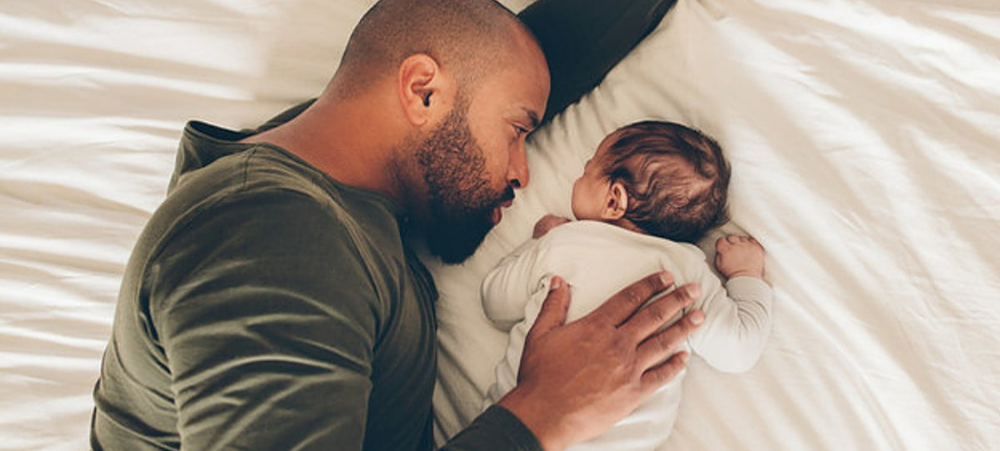There are a few small steps to follow to make infant massage successful.
Get yourself ready. Make massage part of your daily routine. Keep interaction the main aim, rather than getting the massage routine right. Keep in mind, touch is natural, and massage is simply stylised touch.
Massaging your baby allows for bonding, ensuring extra feel good hormones are released by baby, mum and dad. And if you are lactating, prolactin and oxytocin are released ensuring a plentiful milk supply.
Get the room ready. Usually babies are “in the buff” when getting massaged, so ensure the room is warm, put on a heater and close the windows. If you find a heater too hot and uncomfortable for yourself, then preheat the area with a heating pad under the bed linen, then switch off or onto low once you start.
Ensure items like a spare nappy, massage oil and milk are ready. Babies can get thirsty after and during massage. Often it’s giving your baby the comfort of a familiar feed that allows you to continue massage. Just be warned, if your baby does feed in between, no tummy massage.
Use cold pressed vegetable oil. Why not just use any oil or lotion? Cold pressed oils retain their natural antioxidant goodness. This means minerals, vitamins and omegas can be absorb by your baby’s skin. Also if baby puts her foot/hand into her mouth or eyes, there will most likely be no reaction.
Steer clear of nut oils though, until you have established your baby’s unique allergy tolerance. I find Grape-seen oil a lovely light oil to start with.
Where to begin massage. The legs and arms are probably the best place to start massage, whether you have done it many times before or this is your first try. This is because it feels safe for your baby, and it is easier for mums and dads to control a leg or arm. Keep the strokes going in an upward direction towards the chest, this improves blood flow around the whole body.
Some babies do not like massage, and so here you have to choose whats best for your baby. Keeping massage sessions to just the legs for a while, and keeping sessions short is one way to ensure success. Under 7 mins. Or switch it up and do a few massage movements while baby is in the bath. Keep the massage short and do some more later in the day. Increase this time slowly, and suddenly you will have your kids lining up for their daily dose.
Babies sometimes love massage and then suddenly not. Use this unusual and sudden change to your advantage. It may be the first clue that your baby may be at the beginning stages of getting sick. And it may also indicate that baby has had a stressful day, and so extra cuddles are required.
And yet still some babies do not like massage, no matter what you try. Deep touch, light feather touch, only 7 minutes, in the morning, in the night. That’s also okay, I am sure you know a few of your friends who would rather never hug. Sensory integration takes time, patience is the answer here. Touch should never be forced, no matter the age. Keep listening to your infants unique verbal, and non verbal clues.
Some parents who have children with special needs, have found massage to be an especially special bonding experience, a time of quiet non verbal communication and attachment to one another.
Babies of any age can benefit from massage. Massage can help increase sleep, improve restless sleep, reduces muscle pain for toddlers who are just crawling and walking while improving motor skills, massage can reduce stuffy noses, and can improve digestion. At times babies appreciate songs or rhymes and talking during the massage, simultaneously stimulating language skills. And yet at other times a quiet peaceful room, to increase sleeplessness is most useful.
Keep it fun and lighthearted, a time to bonding, a time to reconnect after being apart and for getting to know one another.The key to successful massage, make your massage routine fit your families unique needs and schedules.
targeted toward Parents.
We understand that there are many aspects that encompass a Mother, Father or Child and strive toward providing resources and services that accommodates
this.
Our content is aimed to inform and educate families on issues starting from
pregnancy through to the challenges of the teen-age years.
- Building a Reading Habit: Books That Kids Actually Love - October 17, 2025
- Dealing With Mom Guilt: Tips to Let Go - October 17, 2025
- Simple Daily Routines That Reduce Stress for Parents - October 16, 2025





